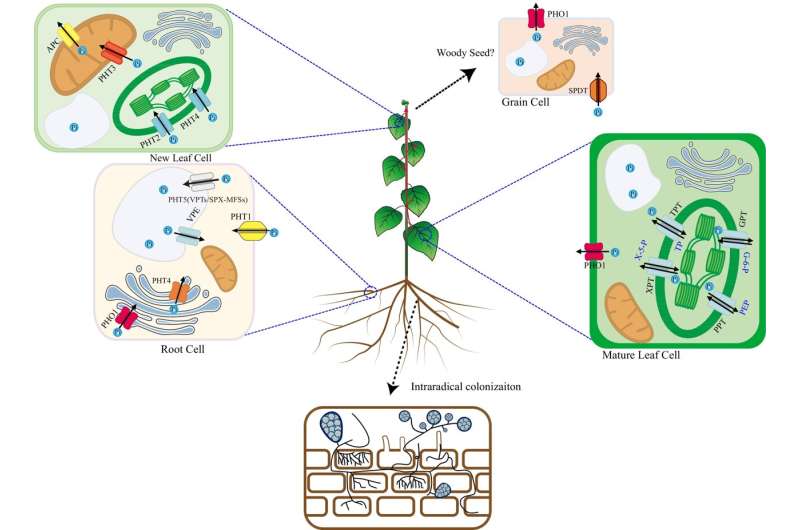This article has been reviewed according to Science X's editorial process and policies. Editors have highlighted the following attributes while ensuring the content's credibility:
fact-checked
trusted source
proofread
Enhancing forest productivity through improved phosphorus use

A research team has reviewed the mechanisms of inorganic phosphorus (Pi) uptake, transport, and signaling in woody plants based on the backbone of model and crop plants. Their findings emphasize the importance of Pi in photosynthesis, respiration, and genetic information transfer.
The research underscores the need for strategies to increase soil Pi content and develop high phosphorus use efficiency (PUE) plants. These advancements could significantly enhance forest productivity and resilience by addressing Pi deficiency, a major limiting factor in natural ecosystems.
Inorganic phosphorus (Pi) is an essential macronutrient for plant growth, playing a key role in numerous physiological processes, such as root development, early shoot growth, and fruit quality control. However, the low amount of Pi concentration, a slower Pi diffusion rate, and precipitation of Pi with cations in soils lead to continuous Pi deficiency for woody plant growth and development.
Given the increasing availability of woody plant genomes, there is an imperative to comprehend the molecular mechanisms underlying the absorption, transportation, and developmental regulation mediated by Pi starvation signaling.
A study published in Forestry Research addresses the need to understand the molecular and physiological responses of plants to Pi deficiency, especially in forest ecosystems where Pi fertilization is not economically feasible.
The review details the processes of Pi uptake and transport, which occur primarily through root systems. These processes encompass intracellular transport, long-distance transport, Pi remobilization in mature leaves, and Pi transport in grains.
The review highlights the significant role of mycorrhizal fungi in enhancing Pi uptake by forming symbiotic relationships with plant roots. Furthermore, the research discusses the molecular signaling pathways that are activated in response to Pi deficiency, leading to adjustments in root architecture and other physiological responses to optimize Pi acquisition.
The review also summarizes the interactions between Pi and other mineral nutrients such as nitrogen (N) and iron (Fe). It points out the challenges and future directions of Pi research in woody plants, including the need to characterize woody-specific regulatory mechanisms of Pi signaling and evaluate the regulatory roles of Pi on traits specific to woody plants, such as wood formation.
According to the study's lead researcher, Liuyin Ma, "Understanding how the Pi signaling functions in the formation of woody-specific traits such as wood formation or seasonal growth is the foundation of Pi research in woody plants."
In summary, the research team's comprehensive review provides a detailed understanding of Pi uptake, transport, and signaling in woody plants.
This knowledge is crucial for developing strategies to improve PUE in forestry, potentially leading to more sustainable forest management practices. The insights gained from this review could guide future research aimed at engineering high PUE woody plants, thereby enhancing productivity and resilience in forest ecosystems.
More information: Xingyan Fang et al, Phosphorus uptake, transport, and signaling in woody and model plants, Forestry Research (2024). DOI: 10.48130/forres-0024-0014
Provided by Chinese Academy of Sciences



















